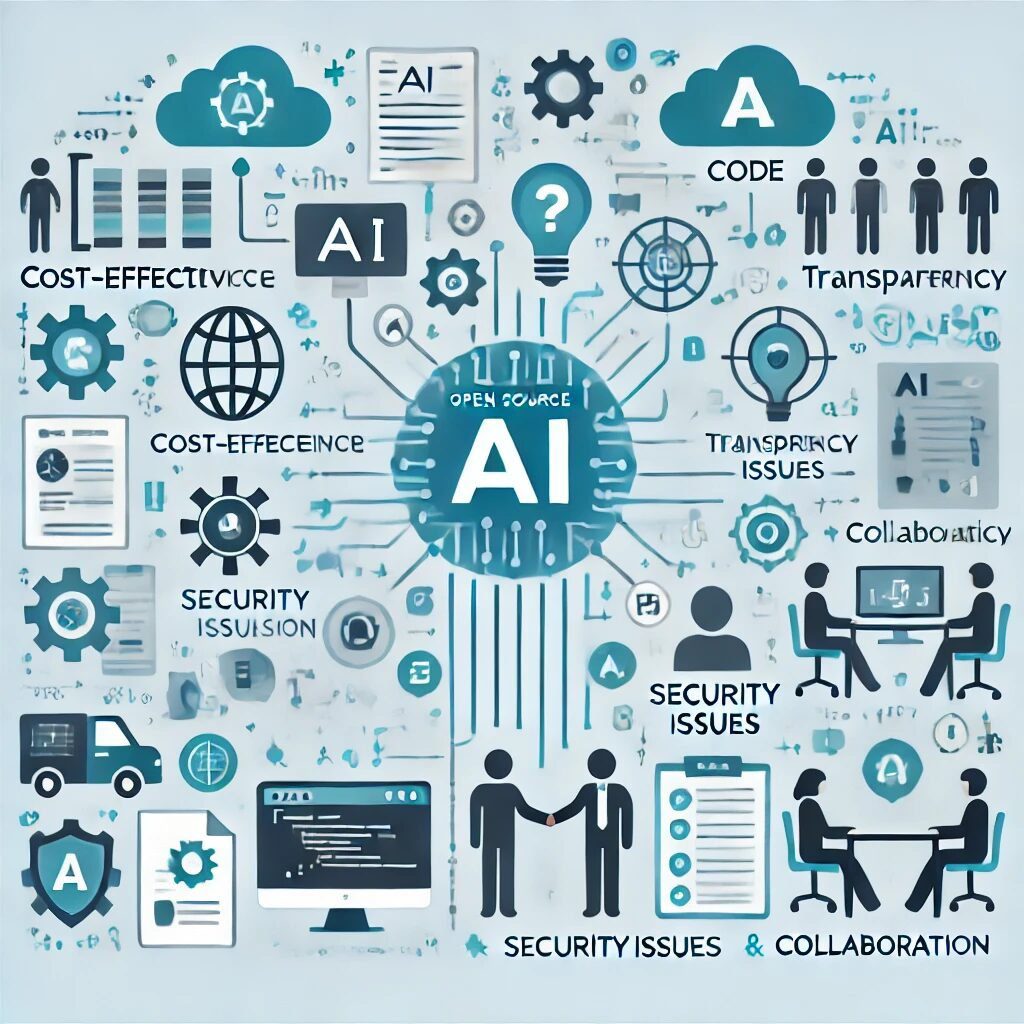What Is Open-source AI?
Open source AI refers to publicly available AI frameworks, methodologies, and technology. Everyone may view, modify, and share the source code, encouraging innovation and cooperation. Openness has sped AI progress by enabling academics, developers, and companies to build on each other’s work and create powerful AI tools and applications for everyone.
Open Source AI projects include:
- Deep learning and neural network frameworks PyTorch and TensorFlow.
- Hugging Face Transformers: Language translation and chatbot NLP libraries.
- OpenCV: A computer vision toolbox for processing images and videos.
Through openness and community-driven standards, open-source AI increases accessibility to technology while promoting ethical development.
How Open Source AI Works
The way open-source AI operates is by giving anybody unrestricted access to the underlying code of AI tools and frameworks.

Community Contributions
Communities of engineers, academics, and fans create open-source AI projects like TensorFlow or PyTorch. They add functionality, find and solve errors, and contribute code.
In order to enhance the program, many people labor individually, while others are from major IT corporations, academic institutions, and research centers.
Access to Source Code
Open Source AI technologies’ source code is made available on websites such as GitHub. All the instructions needed for others to replicate, alter, and comprehend the AI’s operation are included in this code. The code’s usage is governed by open-source licenses (such MIT, Apache, or GPL), which provide rights and restrictions to guarantee equitable and unrestricted distribution.
Building and Customizing AI Models
The code may be downloaded and used “as-is,” or users can alter it to suit their own requirements. Because developers may create bespoke AI models on top of pre-existing frameworks, this flexibility permits experimentation. For example, a researcher may tweak a computer vision model to increase accuracy for medical imaging, or a business could alter an open-source chatbot model to better suit its customer service requirements.
Auditing and Transparency
Because anybody may examine the code for open source AI, possible biases, flaws, and mistakes in AI algorithms can be found and fixed more rapidly. Because it enables peer review and community-driven changes, this openness is particularly crucial for guaranteeing ethical AI activities.
Deployment and Integration
Applications ranging from major business systems to mobile apps may be linked with open-source AI technologies. Many tools are accessible to a broad range of skill levels because they provide documentation and tutorials. Open-source AI frameworks are often supported by cloud services, allowing users to easily expand their models or incorporate them into intricate systems.
Continuous Improvement
Open-source AI technologies allow users to test, improve, update, and fix errors before sharing the findings with the community. Open Source AI democratizes cutting-edge AI technology via cross-sector research and collaboration.
Advantages Of Open-Source AI

Research and Cooperation: Open-source AI promotes international cooperation between organizations, developers, and academics. They lessen effort duplication and speed up AI development by sharing their work.
Transparency and Trust: Open source AI promotes better trust by enabling people to examine and comprehend how algorithms operate. Transparency ensures AI solutions are morally and fairly sound by assisting in the detection of biases or defects.
Startups: Smaller firms, and educational institutions that cannot afford proprietary solutions may employ open-source AI since it is typically free or cheap.
Developers: May customize open-source AI models to meet specific needs, improving flexibility in healthcare and finance. Open Source AI allows students, developers, and data scientists to explore, improve, and participate in projects.
Open-Source AI Security and Privacy issues: Unvetted open source projects may provide security issues. Attackers may take advantage of flaws in popular codebases, particularly if fixes or updates are sluggish.
Quality and Upkeep: Some open-source AI programs have out-of-date models or compatibility problems since they don’t get regular maintenance or upgrades. Projects often depend on unpaid volunteers, which may have an impact on the code’s upkeep and quality.
Complexity: Implementing Open Source AI may be challenging and may call for a high level of experience. Users could have trouble with initial setup or model tweaking in the absence of clear documentation or user assistance.
Ethics and Bias Issues: Training data may introduce biases into even open-source AI, which may have unforeseen repercussions. Users must follow ethical standards and do thorough testing since transparent code does not always translate into equitable results.
Commercial Competition: Open-source initiatives do not have the funds and resources that commercial AI tools possess, which might impede scaling or impede innovation.
Drawbacks
- Open source AI is essential to democratizing technology.
- Nevertheless, in order to realize its full potential and overcome its drawbacks, it needs constant maintenance, ethical supervision, and active community support.


